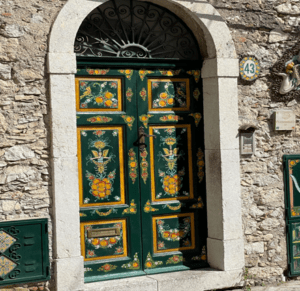What a dream it would be to buy a house in Italy. A house can bring us so much joy and happy memories over the years.
But, before they are move in ready and we can live happily ever after, many houses need some TLC and updates – some much more than others. Many homes for sale in Italy need a complete overhaul.
So, how to start the process? And, what are some of the key considerations?
Let’s look at the process first and talk about the professionals needed as well as indicate time frames for restoration.
First, some types of remodeling require a permit while others do not.
Any work that is not structural and which does not imply significant changes to the property, in general does not require a permit. For example, interior painting of walls, installing tile or wood floors, replacing toilets or faucets, or installing doors/windows would not require a permit. Note, however, if new pipes are needed, this will require a permit.
And, if for example, you are changing the position of a door or a window, you will need a permit and to update the architectural plans of the property.
For the external façade of the property, generally you don’t need a permit to paint the structure. However, this depends on the specific location of a home. If the home is in the historic center, for example, it may be protected as a historic property, and therefore you would need to request permission to paint the home and there may be color restrictions to maintain the cultural/historic integrity and value of the area. This is common in many countries, but Italy may have more historic areas than other places.

When modifying the structure of the existing property, you will need permits, including for adding walls or staircases. Many old country homes have only external stairs between floors. This is not ideal when temperatures drop or when it rains. Adding hydro or electrical or heating will also require a permit.
In the event you have structural changes which require a permit, you will need to retain a project manager (PM), who should be a licensed engineer, architect or a geometra’. The PM represents your interests throughout the lifespan of the project.
The PM will:
1) design and cost the project,
2) request and obtain the necessary building permits,
3) identify and solicit bids from potential contractors or builders,
4) monitor the work of the builder or construction contractor, and
5) certify that the work has been done to the standards required.
The project manager is an independent professional who works to protect your interests as the home owner. He or she is NOT affiliated with the construction company or builder.
In small towns, over course, people may all know each other, however the PM should be an independent professional who is licensed and monitored by the state.
After the project has been designed and costs estimated, the PM will solicit bids for the work on your behalf from one or more builders or construction contractors.
![]() Caveat emptor: do not accept a bid simply because it is the lowest offer.
Caveat emptor: do not accept a bid simply because it is the lowest offer.
Evaluate the offer based on materials proposed and industry reputation of the builder, because a low offer may mean that the builder takes short cuts, uses low grade materials, or has shoddy workmanship.
The Italian economy is not in good shape and day laborers may be plentiful, but that does not mean they are skilled at their trades. Worse, some builders may simply take your down payment and that will be the last you see of them.
So, it is important to choose both your architect, engineer or geometra’ (your representative) and your builder wisely. Otherwise, you may lose funds and end up the victim of the Kafka-esque Italian judicial system (having lost money). As an American lawyer who has worked in Italy, I advise you to avoid the justice system at all costs. Litigation can last five to ten years in Italy for very simple civil cases like water damage in an apartment building caused by a neighbor’s broken washing machine.
Once you have selected your team and determined a start date, the actual work can begin. You can expect that for the restoration of a moderately sized apartment of 80-90 square meters that the work will take between three to six months.
So, if you want to spend your summer holidays in your new home, plan to start work after the Christmas holidays in Italy, which end after the Epiphany or on January 7th.
For independent homes, such as a 200 sq. meter home in the countryside, expect between one to two years for completion, and slightly longer if you are adding a swimming pool (for which you will need a permit) and landscaping.
Ready to start the remodel?
1LoveItalia can assist you to choose the professionals that you ultimately retain, conducting due diligence on their businesses, reputation and evaluating their previous work.



